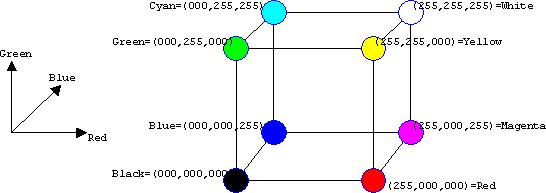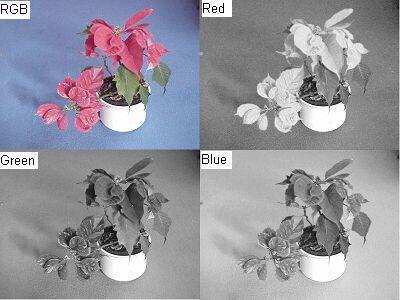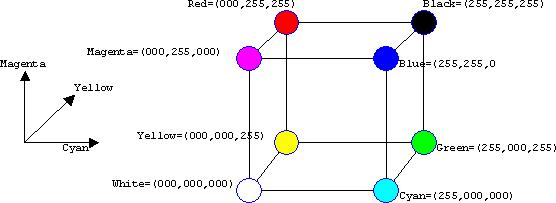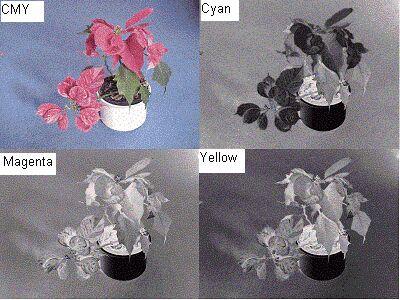Color Coding / Color: Difference between revisions
| Line 10: | Line 10: | ||
<br> | <br> | ||
*Color Coding: The typical human eye can distinguish over 10,000 different colors. We use color everyday to identify, classify and determine the state of objects around us. In addition to natural colors, we use color codes for displaying color on the Computer. That is what Color Coding is used for.[http://www.sahler.com/colorcode.shtml ''http://www.sahler.com/colorcode.shtml''] | *Color Coding: The typical human eye can distinguish over 10,000 different colors. We use color everyday to identify, classify and determine the state of objects around us. In addition to natural colors, we use color codes for displaying color on the Computer. That is what Color Coding is used for. [http://www.sahler.com/colorcode.shtml ''http://www.sahler.com/colorcode.shtml''] | ||
==Introduction== | ==Introduction== | ||
Revision as of 11:49, 25 October 2005
Definition(s)
- Color: Color is the perceptual result of light in the visible region of the spectrum, having wavelengths in the region of 400 nm to 700 nm, incident upon the retina. [Charles Poynton, 1997]
- Coding:
- In communications systems, the altering of the characteristics of a signal to make the signal more suitable for an intended application, such as optimizing the signal for transmission, improving transmission quality and fidelity, modifying the signal spectrum, increasing the information content, providing error detection and/or correction, and providing data security (Note: A single coding scheme usually does not provide more than one or two specific capabilities. Different codes have different sets of advantages and disadvantages.)
- In communications and computer systems, implementing rules that are used to map the elements of one set onto the elements of another set, usually on a one-to-one basis
- The digital encoding of an analog signal and, conversely, decoding to an analog signal
- Computer programming
- The process of classification of information http://www.mywiseowl.com/articles/Coding
- Color Coding: The typical human eye can distinguish over 10,000 different colors. We use color everyday to identify, classify and determine the state of objects around us. In addition to natural colors, we use color codes for displaying color on the Computer. That is what Color Coding is used for. http://www.sahler.com/colorcode.shtml
Introduction
Examples for Color Coding
RGB
Shadow Mask Color CRTs consist of Red/Green/Blue triples, which are selectively excited through three cathode rays (accelerated through 3 separate anode voltages) Each combination of the voltages applied creates its own characteristical color, so it is natural to characterize different colors through the intensity ratios. The Shadow-Mask-Color-CRTs can not show all the colors, that a human eye can perceive. On the other a significant portion of possible colors can be comfortably described by the three RGB values. This simple color coding has accepted elatively fast and ound its way into all operating systems, image formats and programming languages. The acceptance level is also one of the reasons for use of this technology in all flat panel displays. The final result is that the RGB model is the most important and universal color coding convention. The RGB model may be satisfactory for display purposes, but unfortunately has limitations, which make it less than useful for applications, where the color is not supposed to depend from the display used to create or display it.


CMY und CMYK


YIQ and YUV
HLS, HSV, HVC
Bibliography
Back to Gruppe 09